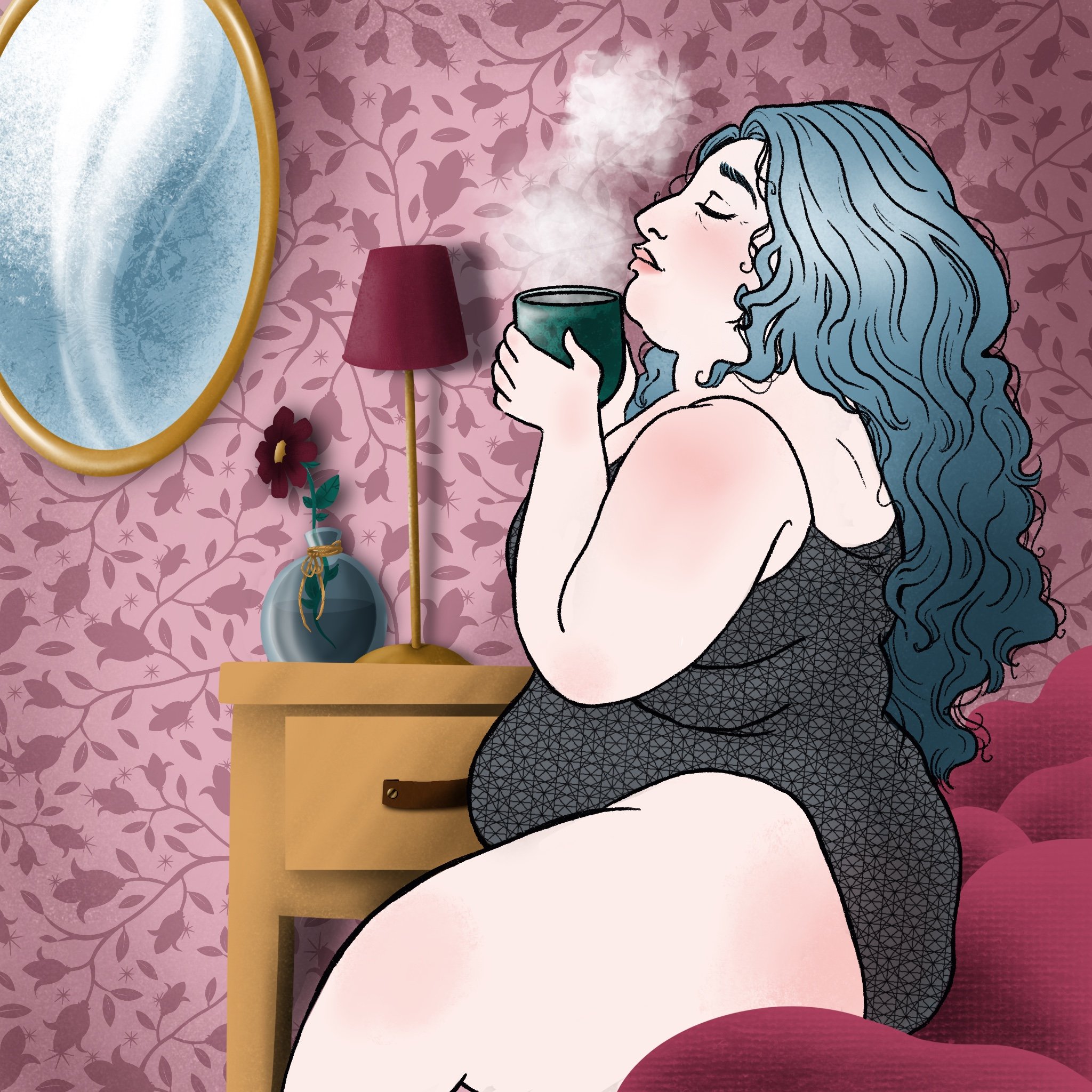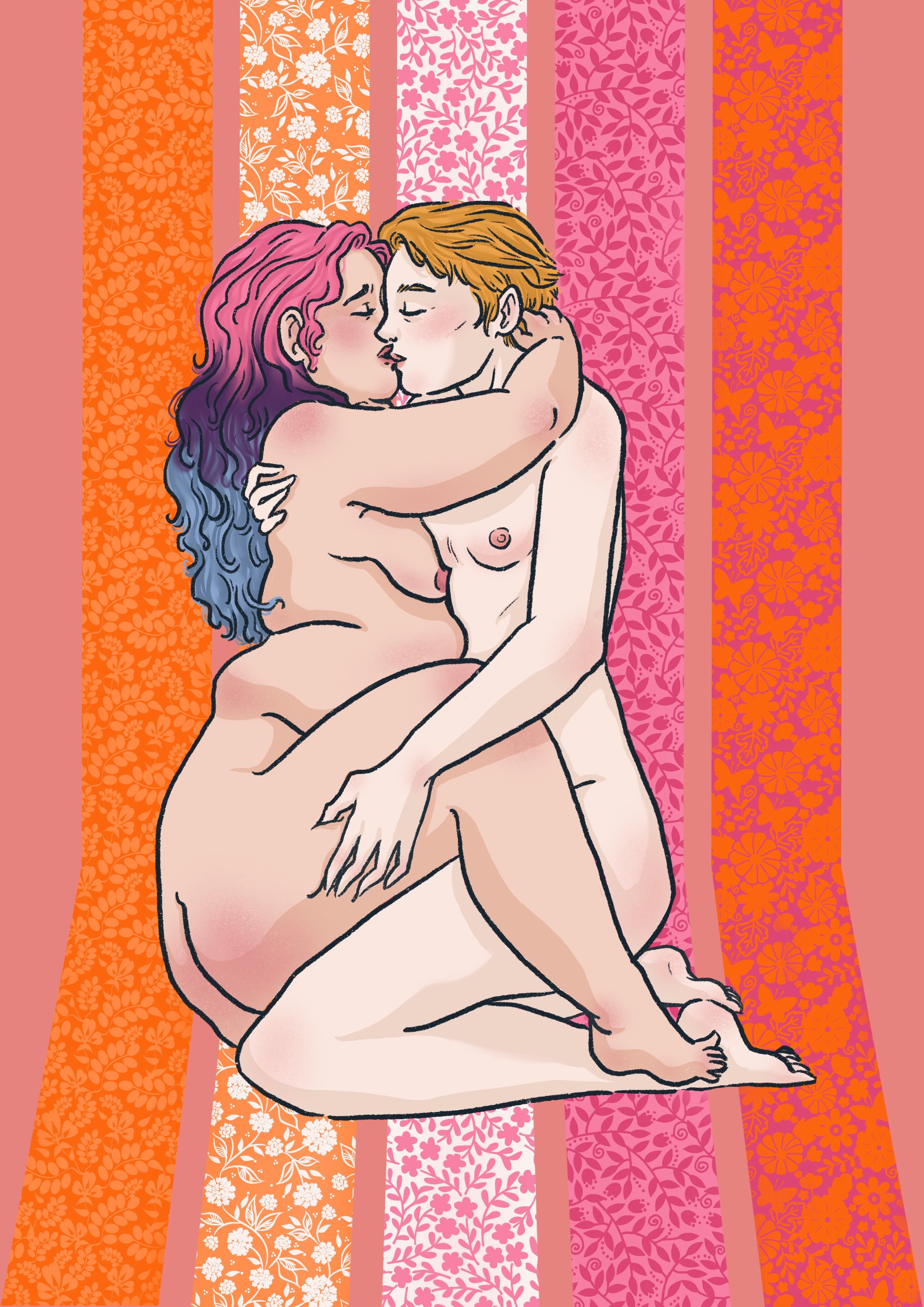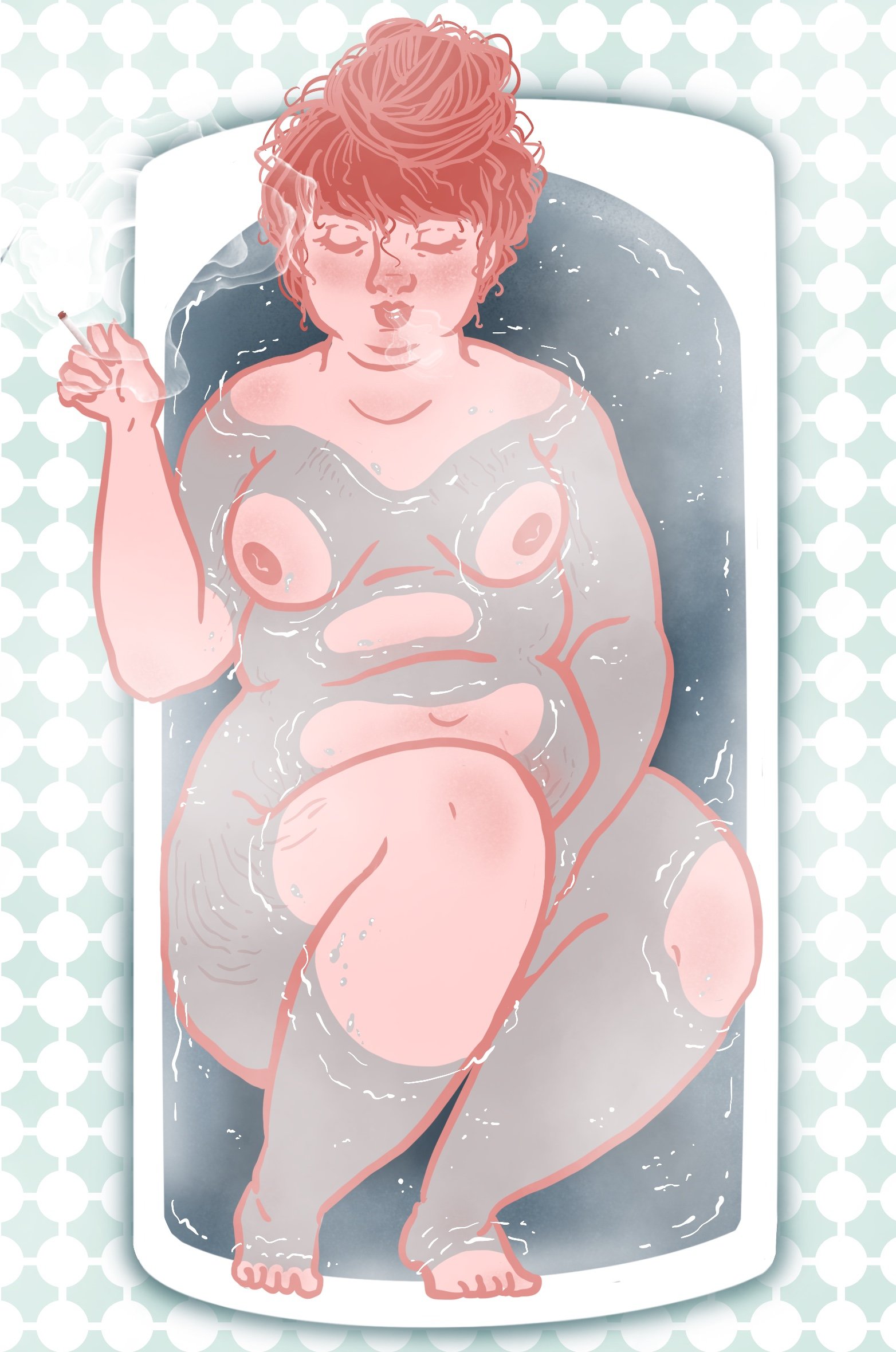A Love Letter to Ellen Bass’ ‘Ode to fat’ by Fleur Feeney
It doesn’t take a genius to notice there’s a size problem in the media we consume. Public discourse, consumed by diet culture and healthism, mandates that to be healthy, attractive, and good, we must be thin. Despite a sluggish uptick in casting fat actresses in Hollywood and a mild appetite for ‘Bigger Girl Lit,’ a subgenre of chick-lit, positive and meaningful representation for fat women is scant. The limited number of fat characters we have access to are, more often than not, coded as gluttonous, greedy and often their fatness is used as evidence for their morally objectional character, or as an obstacle they must overcome by losing weight. As a former English student, who was forced to read widely over multiple forms, genres and time periods, I can say confidently that I read many a tale of thin women, but in my studies, I encountered maybe one meaningful and significant depiction of fatness. And never did I read a love poem about someone that looked like me. This is why I was delighted and moved when, one day, I accidentally stumbled across Ellen Bass’ ‘Ode to Fat’ from her collection Indigo, an ode to poet Ellen Bass’ wife, praising her fat body and the weight she regained after illness.
For the lit-wizzes among you, the word ‘ode’ might bring other famous poets to mind, like John Keats or Percy Shelley, who pine after the waifish and pale, the skeletal and fragile, but Bass describes fatness in all its unadulterated glory. Less than a page long, ‘Ode to Fat’ scans luxuriously over the rolls and folds of the fat body and paints fatness as, not only desirable, but healthy (anyone exposed to the cruel and merciless onslaught of ‘obesity epidemic’ content of the past twenty years will understand how radical this is). Bass writes about fatness with love, care, and a healthy dose of lust, and offers a fat positive manifesto in only a few words. She consciously disregards notions that thin and fat are synonyms for healthy and unhealthy, attractive and unattractive, reversing a well-trod hierarchical dichotomy. She layers in the colonial origins of anti-fat rhetoric that stem from the transatlantic slave trade and the protestant moralism that informed the notion that a fat body is lazy and gluttonous. Bass’ work is considered, clever and beautiful to read, but more than that, she is the first poet I had read that described bodies like mine with love and with awe.
In an interview with Ms magazine, Bass said she ‘took pleasure in praising the flesh […] And celebrating that older, larger—healthier—body.’ She explicitly conflates largeness and health, imbuing positive messaging into the usually dreaded ‘gain[ing] some pounds.’ Later in the same interview, she describes thinness as a ‘tyranny’ and says, ‘our culture has elevated thinness to an insane degree.’ When her wife is thin, Bass describes her as ‘unraveling,’ a ‘slender scrap,’ and ‘vacant, a ripped sack,’ commenting on the insidious nature of extreme weight loss. By contrast, she describes her wife’s fat body as abundant and joyful, linking her with bountiful natural spaces. Her ‘wondrous / flesh that’s swelled again, the way a river swells / when ice relents’ likens her ‘swelling’ to the coming of spring. Her body is described in terms of acres, marshes, ‘promising planets,’ Bass relishing in the ‘boundless’ space and size of her lovers’ body, the soft flesh inextricably linked with life and health.
The accumulating of fat is described as ‘labor’ to ‘rebuild its palatial realm,’ eating and gaining weight being deemed productive work that creates her wife’s body anew, that maintains its extravagant qualities. She blesses the ‘butter’ and ‘brie’ that feed her wife, the fattening foods lauded as almost sacred due to their power to satisfy an indulgent appetite. Bass denies the moralism that usually comes with a description of a fat body and uses religious imagery to worship it instead, finishing the ode with ‘May you always flourish enormous and sumptuous, / be marbled with fat, a great vault that / I can enter, the cathedral where I pray.’
In a literature and media landscape that villainises and laughs at fat bodies on the daily, to revere and idolise the plus-sized form in such a way is new, it’s transgressive, and it’s needed. In her book What We Don’t Talk About When We Talk About Fat, Aubrey Gordon explains the commonly held belief is that ‘fat people are so categorically undesirable, we're told, that any attraction to us must speak to a darker urge or some unchecked appetite.’ Bass’ luxurious, lustful descriptions of fatness, then, writes against this shame and venerates the fat form. She centres a fat positive sexuality, boundless, soft bodies, the ‘enormous and sumptuous,’ without embarrassment and without a qualifying criticism to undercut the whole thing. Work like this proves fat women deserve to be described with opulent language, with grand images and gilded metaphors. Bass offers up a simple manifesto: the fat body is healthy, it is worthy, it is beautiful. And more than anything, fat bodies deserve an ample place in our odes.
Illustrations by Marie Prudhomme | IG @marillumine
Marie is a French illustrator who likes to depict the beauty and power of fat and/or queer folk.
Words by Fleur Feeney | IG @gowiththefleur
Fleur works in education by day and edits the Fat Zine blog by night. Her hobbies include: guessing the plot twists in movies; buying books; carrying around said books, unread, in a tote bag; ranting about anti-fat bias; getting a little treat; and using unnecessary semi-colons.





